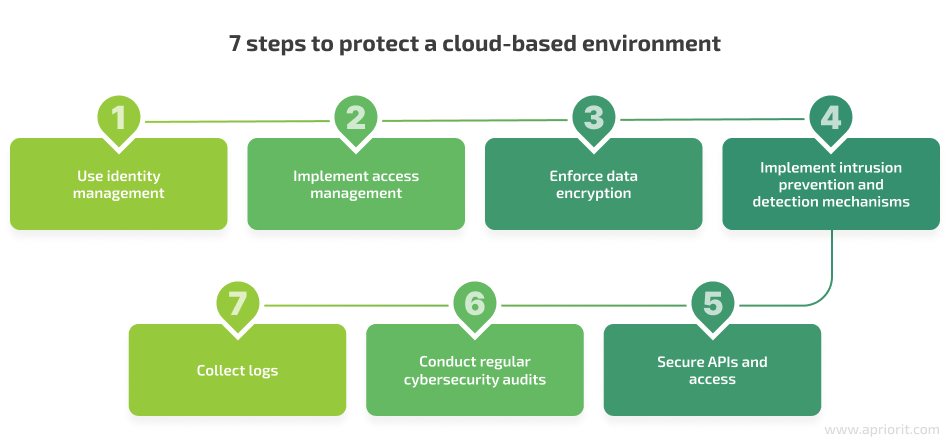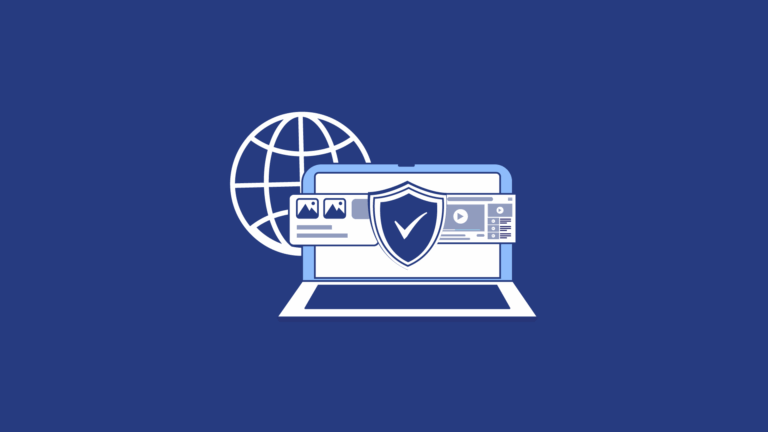Brute force attacks represent one of the most straightforward yet powerful cyber threats today. Imagine someone systematically attempting every possible key to unlock a door—eventually, they’ll find the right combination.
This simplicity makes brute force attacks particularly dangerous, posing significant risks to both individuals and organizations. Understanding the methods, objectives, and ways to prevent these attacks is essential for robust cybersecurity.
Definition and Objectives of Brute Force Attacks
What is a Brute Force Attack?
A brute force attack is a hacking method utilizing trial-and-error to crack passwords, login credentials, and encryption keys.
Attackers deploy this straightforward, persistent tactic to gain unauthorized access to personal accounts, organizational systems, and network infrastructure. By systematically testing numerous username and password combinations, attackers gain access to various systems and accounts through brute force attacks.
Hackers eventually find the correct credentials. The term “brute force” aptly describes the relentless, exhaustive approach attackers use to breach security. In the context of brute force attacks, the concept of a correct password is crucial, as attackers systematically guess combinations of known words, numbers, and special characters to discover it.
Key Objectives of Brute Force Attacks
Brute force attacks are executed with several malicious objectives in mind, each posing significant threats to individuals and organizations alike:
- Gain Unauthorized Access: The primary goal of brute force attacks is to gain unauthorized access to sensitive systems, networks, and user accounts. By systematically trying different password combinations, attackers aim to bypass security measures and infiltrate protected areas.
- Steal Valuable Data and User Credentials: Once access is obtained, attackers can steal sensitive data, including personal information, financial records, and login credentials. This stolen data can be used for identity theft, sold on the dark web, or leveraged for further attacks.
- Compromise Cloud Services and Critical Infrastructure: Brute force attacks can target cloud services, databases, and critical infrastructure, leading to severe operational disruptions. By exploiting weak passwords or default settings, attackers can compromise cloud environments, resulting in data breaches and service outages.
- Facilitate Further Cyberattacks: Gaining access through brute force attacks can serve as a stepping stone for launching additional cyberattacks. Attackers may use compromised systems to distribute malware, conduct phishing campaigns, or execute denial-of-service attacks, amplifying the scope of their malicious activities.
- Disrupt Normal Operations and Services: By overwhelming systems with repeated login attempts, brute force attacks can disrupt normal operations and degrade service quality. This disruption can lead to financial losses, customer dissatisfaction, and damage to an organization’s reputation.
- Hijack Accounts for Fraudulent Activities: Compromised accounts can be hijacked for fraudulent activities, such as unauthorized transactions, sending spam, or impersonating legitimate users. This not only affects the victim but can also tarnish the reputation of the organization associated with the compromised account.
- Damage an Organization’s Brand Reputation and User Trust: Successful brute force attacks can severely damage an organization’s brand reputation and erode user trust. Customers may lose confidence in the organization’s ability to protect their data, leading to decreased loyalty and potential loss of business.
By understanding these objectives, organizations can better prepare and implement effective security measures to protect against brute force attacks and mitigate their potential impact.
Types of Brute Force Attacks
Dictionary Attacks

A dictionary attack involves systematically trying a list of commonly used passwords or dictionary words against a user account. Although less sophisticated than other methods, it can still be effective against weak passwords.
Attackers typically use predefined word lists, including common passwords, phrases, and variations, making dictionary attacks relatively straightforward but limited in effectiveness against complex passwords. Monitoring failed login attempts is crucial to identify dictionary attacks in real-time and mitigate potential brute force attacks.
Hybrid Attacks
Hybrid brute force attacks combine dictionary methods with traditional brute force techniques. Attackers begin with common dictionary entries, then enhance them by adding numbers, symbols, or variations, significantly increasing their chances of success. This method is highly effective against passwords that users believe to be strong but are merely slight variations of common passwords.
Credential Stuffing

Credential stuffing exploits weak password management habits. Attackers use previously stolen credentials to attempt access across various websites, hoping users have reused passwords across multiple platforms. Credential stuffing specifically focuses on the collection of stolen username and password combinations, exploiting users’ poor password practices.
This type of attack leverages users’ common behavior of recycling passwords, posing substantial threats to personal and organizational security. Using the same password across multiple sites makes it easier for attackers to access additional accounts, increasing the potential for identity theft and financial fraud.
Cloud-Specific Attacks

Cloud-based brute force attacks specifically target cloud management interfaces, API endpoints, and databases. Attackers exploit vulnerabilities such as weak or default passwords to gain access and compromise cloud environments. This type of attack can lead to severe data breaches, operational disruptions, and significant financial and reputational damage.
Brute Force Tools and Software
Attackers use specialized software and tools such as Hydra, THC-Hydra, malware bots, and rainbow tables to automate brute force attempts, making them faster and more efficient.
Rainbow table attacks are an efficient method for cracking passwords using precomputed tables containing hash values, allowing cybercriminals to bypass the computationally intensive process of hashing by directly looking up the plaintext for hashed passwords across various hashing algorithms like MD5 and SHA-1.
Practical Example: Brute Force Attacks on WordPress Websites
WordPress websites are frequent targets of brute force attacks due to their popularity and common login mechanisms. Attackers often target the WordPress login page (wp-login.php) using automated scripts.
How WordPress Websites are Attacked:
- Attackers use automated tools to systematically test username and password combinations.
- They exploit common or default usernames like ‘admin’ or ‘user’.
- Attackers leverage databases of leaked passwords, dictionary attacks, or credential stuffing.
Preventing Brute Force Attacks on WordPress:
- Change Default Login URL: Move or obscure your WordPress login page from the default (
wp-login.php). Plugins like WPS Hide Login help achieve this easily. - Use Strong Passwords: Always use unique and complex passwords for your WordPress admin accounts.
- Limit Login Attempts: Employ plugins that limit login attempts, such as Limit Login Attempts Reloaded, to block repeated failed logins.
- Regular Updates: Keep WordPress core, themes, and plugins up-to-date to patch vulnerabilities promptly.
- Employ Web Application Firewall (WAF): Solutions like SolidWP provide comprehensive protection against brute force and other attacks by filtering malicious traffic before it reaches your website.
Motives Behind Brute Force Attacks
Brute force attacks are often driven by a variety of malicious motives, each with significant implications for targeted individuals and organizations. Understanding these motives is crucial for developing effective defenses against such attacks.
Exploit Ads or Activity Data
Cybercriminals may leverage brute force attacks to infiltrate websites, exploiting user activity or generating fraudulent ad revenue. By gaining unauthorized access to online platforms, attackers can manipulate traffic data, inflate ad clicks, and generate illegitimate revenue streams, leading to financial gains and market manipulation.
Steal Personal Data
One of the primary motives behind brute force attacks is the theft of personal and financial information.
Attackers gain access to systems and accounts to harvest sensitive data, including social security numbers, credit card details, and personal identification information. This data theft can lead to identity theft, financial fraud, and significant privacy breaches, causing long-term harm to victims.
Spread Malware
Brute force attacks can facilitate malware distribution, either through infected emails, spoofed websites, or malicious redirects. Once attackers gain access to a system, they can deploy malware to compromise additional devices, steal data, or disrupt operations. This increases the attacker’s scope of harm and can result in widespread damage across networks and organizations.
Hijack Systems for Malicious Activity
Compromised systems may be used as launching points for further attacks, such as distributed denial-of-service (DDoS) attacks, creating a dangerous domino effect.
By hijacking systems, attackers can mask their identities and amplify their attacks, making it challenging for security teams to trace the origin of the threat.
This hijacking can also involve using compromised systems to send spam, mine cryptocurrencies, or host illegal content, further expanding the attacker’s illicit activities.
Undermine Competitors
In some cases, brute force attacks are motivated by a desire to undermine competitors. By disrupting services, stealing proprietary data, or damaging brand reputation, attackers aim to gain a competitive edge in the market.
This corporate espionage can have far-reaching consequences, affecting business operations, customer trust, and market positioning.
Political or Ideological Objectives
Brute force attacks may also be driven by political or ideological motives.
Hacktivists and state-sponsored attackers often use these techniques to access sensitive information, disrupt government operations, or promote a particular agenda. Such attacks can have significant geopolitical implications, affecting national security and international relations.
By recognizing these diverse motives, organizations can better tailor their security strategies to address the specific threats they face and develop comprehensive defenses against brute force attacks.
Prevention and Protection
Stronger Password Practices
Implementing unique, complex passwords for each account is essential to thwart brute force attacks.
Avoid reusing passwords across multiple accounts, as this practice makes it easier for attackers to gain unauthorized access through credential stuffing.
Employing password managers can help manage strong passwords effectively by generating, storing, and autofilling complex passwords, reducing the risk of human error and password fatigue.
Multi-Factor Authentication (MFA)
Utilizing multi-factor authentication (MFA) provides additional layers of security by requiring multiple verification methods before granting access. This significantly hinders brute force attacks, as attackers must bypass more than one form of authentication.
MFA often combines something the user knows (like a password), something the user has (such as a smartphone or security token), and something the user is (biometrics), making unauthorized access considerably more challenging.
Regular Monitoring of Login Activity
Continuous monitoring of login activity is crucial in detecting suspicious patterns, such as repeated failed login attempts, which may indicate a brute force attack in progress.
By identifying these anomalies early, organizations can take swift action to block malicious IP addresses, enforce account lockouts, and investigate potential breaches. Regular audits and analysis of login data can also help refine security measures and improve overall protection against brute force threats.
Rate-Limiting and CAPTCHA
Applying rate limits and CAPTCHA technologies effectively reduces automated brute force attacks by distinguishing between humans and bots.
Rate-limiting restricts the number of login attempts from a single IP address within a specified timeframe, deterring automated tools from making rapid, successive attempts.
CAPTCHAs add an additional layer of defense by requiring users to complete a challenge that is easy for humans but difficult for bots, further preventing automated brute force attempts.
Security Awareness and Training
Educating employees and users about the importance of strong password practices and the dangers of brute force attacks is a vital component of a comprehensive security strategy.
Regular training sessions and awareness campaigns can help individuals recognize phishing attempts, understand the significance of MFA, and adopt best practices for password management.
By fostering a security-conscious culture, organizations can empower their workforce to become the first line of defense against brute force attacks.
Implementing Advanced Security Solutions
Incorporating advanced security solutions such as intrusion detection systems (IDS) and security information and event management (SIEM) tools can enhance an organization’s ability to detect, respond to, and prevent brute force attacks.
These technologies provide real-time monitoring, threat intelligence, and automated responses to suspicious activities, allowing security teams to address potential threats promptly and effectively.
By adopting these comprehensive prevention and protection measures, individuals and organizations can significantly reduce the risk of falling victim to brute force attacks, safeguarding their digital assets and maintaining the integrity of their systems.
The Role of Encryption Keys in Brute Force Attacks
Understanding Encryption Keys
Encryption keys play a pivotal role in securing digital data by transforming readable information into unreadable formats, ensuring that only authorized parties can decode it. These keys are fundamental to encryption algorithms, which are designed to protect sensitive data from unauthorized access.
The strength of encryption is often measured by the length of the key, with longer keys providing greater security. For instance, 128-bit encryption keys are commonly used for their balance between security and performance, exponentially increasing the complexity and effort required for brute force attacks.
By employing robust encryption methods, organizations can effectively safeguard their data, as the sheer number of possible key combinations makes it infeasible for attackers to crack the encryption through brute force methods.
Moreover, encryption keys are not only used for data at rest but also for data in transit, ensuring end-to-end security across networks.
Detecting and Responding to Brute Force Attacks
Identifying Unusual Patterns
The early detection of brute force attacks is crucial for preventing unauthorized access and mitigating potential damage.
Organizations must implement comprehensive monitoring systems to track login attempts and identify abnormal behaviors, such as repeated failed login attempts from a single IP address or unusual access times.
These patterns can indicate a brute force attack in progress. By analyzing login activity logs and setting up alerts for suspicious behavior, security teams can respond swiftly to potential threats.
Additionally, employing machine learning algorithms can enhance the detection capabilities by recognizing subtle anomalies that may escape traditional monitoring systems. Early intervention not only prevents breaches but also minimizes the impact on systems and data integrity.
Using Security Software
Robust cybersecurity software is essential for defending against brute force attacks. Intrusion detection systems (IDS) and security information and event management (SIEM) tools provide critical defenses by continuously monitoring network traffic and system activities for signs of intrusion.
These tools offer real-time alerts and detailed analysis of security incidents, enabling swift responses to potential threats.
IDS can detect unauthorized access attempts, while SIEM aggregates data from various sources to provide a comprehensive view of security events, facilitating better decision-making.
By integrating these technologies into their security infrastructure, organizations can enhance their ability to detect, respond to, and prevent brute force attacks, ensuring a more resilient cybersecurity posture.
Best Practices for Prevention
Unique and Complex Passwords
Creating unique, complex passwords is a fundamental defense against brute force attacks.
A strong password typically includes a mix of uppercase and lowercase letters, numbers, and special characters, making it difficult for attackers to guess. Regularly updating passwords further mitigates the risk of credential compromise, as it limits the window of opportunity for attackers to exploit stolen information.
Organizations should enforce password policies that require employees to change their passwords periodically and avoid using common words or easily guessable information.
Additionally, using password managers can help individuals maintain strong, unique passwords for each account, reducing the likelihood of successful brute force attacks.
Staying Up to Date with Security Patches
Regularly applying security updates and patches is a critical component of an effective cybersecurity strategy.
Software vendors frequently release patches to address known vulnerabilities that could be exploited by attackers. By staying up to date with these updates, organizations can defend against brute force exploits and other cyber threats.
Automated patch management systems can streamline the process, ensuring that all systems and applications are promptly updated. This proactive approach not only protects against brute force attacks but also enhances overall system security by closing potential entry points for cybercriminals.
Ongoing Security and Password Support
Continuous education and training are vital for enhancing an organization’s cybersecurity posture. Employees should be regularly informed about secure password practices and the dangers of brute force attacks.
Security training programs can help individuals recognize phishing attempts, understand the importance of multi-factor authentication, and adopt best practices for password management.
Conclusion
Brute force attacks remain an ongoing threat due to their simplicity and effectiveness. Awareness of attack methods, objectives, and preventive measures—including robust password management, MFA, and regular security updates—is critical for safeguarding digital environments.
Vigilance and proactive defense strategies are essential to effectively prevent and mitigate the damage caused by brute force attacks.
Frequently Asked Questions (FAQ)
What is a brute force attack?
A brute force attack is a method used by attackers to gain unauthorized access to systems by systematically guessing passwords, login credentials, or encryption keys through trial-and-error. This approach involves trying numerous combinations until the correct one is found.
How does a brute force attack work?
Brute force attacks work by using automated tools to attempt various password combinations against a target system. Attackers may use traditional brute force methods, dictionary attacks, or hybrid approaches to crack passwords and gain access.
What are the types of brute force attacks?
There are several types of brute force attacks, including traditional brute force attacks, dictionary attacks, hybrid brute force attacks, credential stuffing, and reverse brute force attacks. Each type utilizes different methods to guess or obtain login credentials.
How can I prevent brute force attacks?
Preventing brute force attacks involves using strong, complex passwords, enabling multi-factor authentication (MFA), monitoring login activities, implementing rate-limiting and CAPTCHA, and keeping security systems updated with the latest patches.
Why are brute force attacks dangerous?
Brute force attacks are dangerous because they can lead to unauthorized access to sensitive data, identity theft, financial fraud, and operational disruptions. Once attackers gain access, they can steal data, distribute malware, or launch further attacks.
What tools do attackers use for brute force attacks?
Attackers often use automated tools like Hydra, THC-Hydra, and rainbow tables to conduct brute force attacks. These tools help them efficiently guess password combinations and crack encrypted data.
Are there any defenses against brute force attacks?
Yes, defenses include using strong passwords, employing MFA, regularly updating security patches, monitoring for suspicious login attempts, and educating users about secure password practices.
Can brute force attacks be detected?
Yes, brute force attacks can be detected by monitoring for unusual login patterns, such as repeated failed login attempts or access from unfamiliar locations. Security software and intrusion detection systems can help identify these activities.
By understanding these frequently asked questions, individuals and organizations can better prepare and protect themselves against the threat of brute force attacks.







